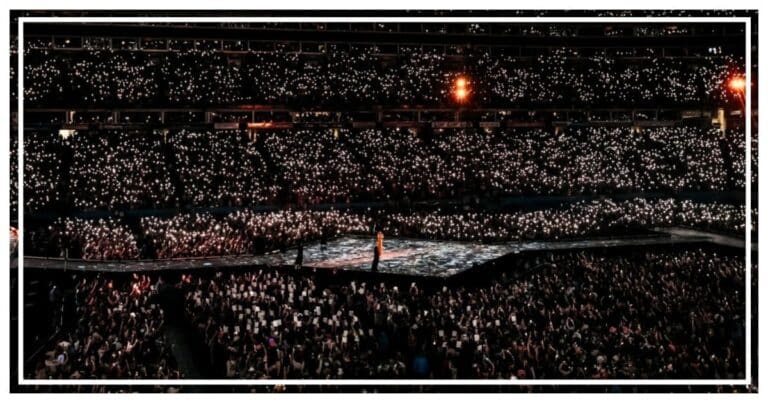
Concerts are known to bring a diverse group of people together.
From young to old, music is what unites us at times. And in this particular instance, it’s teaching us a bit of science.
Which is why some scientists are rushing to see Taylor Swift in concert – and describing it as earth-shattering.
“Swifties” as her fans are called, filled the Lumen Field stadium. With more than 140,000 people in attendance for Swift’s ‘Eras’ tour, the crowds were record-breaking in more ways than you might expect.
They set off an earthquake seismometer that matched the intensity of a 2.3-magnitude earthquake, seismologists said.
Dubbing it a ‘Swift Quake’, Western Washington University seismologist Jackie Caplan-Auerbach caught wind of the earth-shaking on a site she watches concerning Pacific Northwest earthquakes.

Taylor Swift at Lumen Field in Seattle. Photo by Getty Images
“I grabbed 10 hours of data, from when doors opened to well after I thought the audience had gone home, and I just plotted them out to see how did the ground shake,” she said.
Swift has been taking her tour across the United States. The sold-out show has been so popular that some fans have even taken jobs at the concert venues just to see the singer.
In Seattle, Swift played two nights, July 22 and 23, at Lumen Field, the same stadium where the Seattle Seahawks play. And this isn’t the first time the stadium has had fan-generated seismic activity, either.
I guess I should show the data. Swifties > Seahawks fans.
(except data from the concert may not be caused by the fans–it may be the sound system, so not really a fair comparison). pic.twitter.com/szwowOYQFi
— Jackie Caplan-Auerbach 🇺🇦 🌻 (@geophysichick) July 27, 2023
In January 2011, Former Seahawks running back Marshawn Lynch mounted a fourth-quarter comeback, breaking out of nine tackles and making a 67-yard-touchdown, sending fans into a cacophony of cheers for the miracle play. The cheering of relieved fans triggered a 2.0 on the same scale, and earned Lynch’s run a new name: “Beast Quake”.
While the numbers show a small difference in the rating of activity, Swift’s concert had double the shaking of Lynch’s quake.
“The primary difference is the duration of shaking,” Caplan-Auerbach said. “For Taylor Swift, I collected about 10 hours of data where rhythm controlled the behavior. The music, the speakers, the beat. All that energy can drive into the ground and shake it.”
Cheering after a touchdown lasts for a couple seconds, but eventually it dies down. It’s much more random than a concert.”
While the “Swift Quakes” seem like they are just fun to learn about, Caplan-Auerbach said that they could help scientists study the ground under the stadium. It will show them “how that geology responds to shaking, how buildings vibrate, how seismic energy is propagated through that geology.”
And more knowledge is always a good thing.
“(It’s) important to us because how buildings respond in earthquakes often has to do with how the subsurface shakes,” she added.
The more we know about that, the better we can design buildings to be resilient in case of earthquakes.”
Swift posted on Instagram after the Seattle concerts. “Seattle that was genuinely one of my favorite weekends ever. Thank you for everything. All the cheering, screaming, jumping, dancing, singing at the top of your lungs,” she said.
I think scientists would have to agree – ‘Swifties’ made quite the mark on Seattle.
In fact, Caplan-Auerbach said that Beyonce will be at Lumen Field in September. She tweeted that she was busy working on a “proposal to get tickets,” in a bid to compare the two events. “For science,” she added.
For a look at the ground-shaking concert, watch below!
Sources: Smithsonian Magazine | BBC | Washington Post


